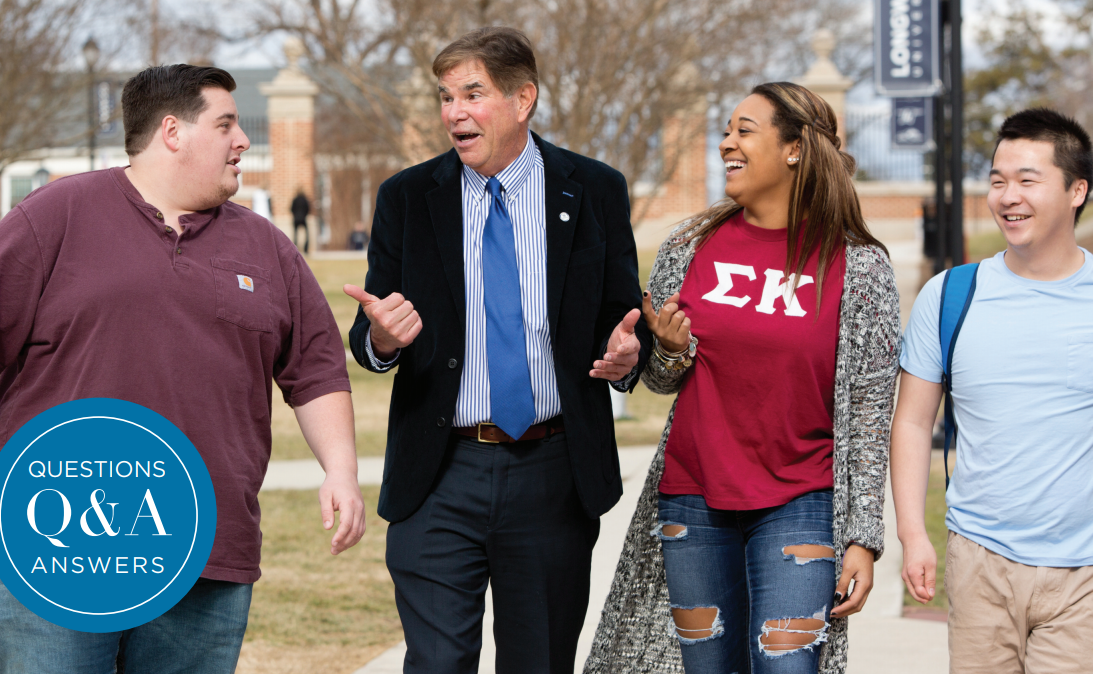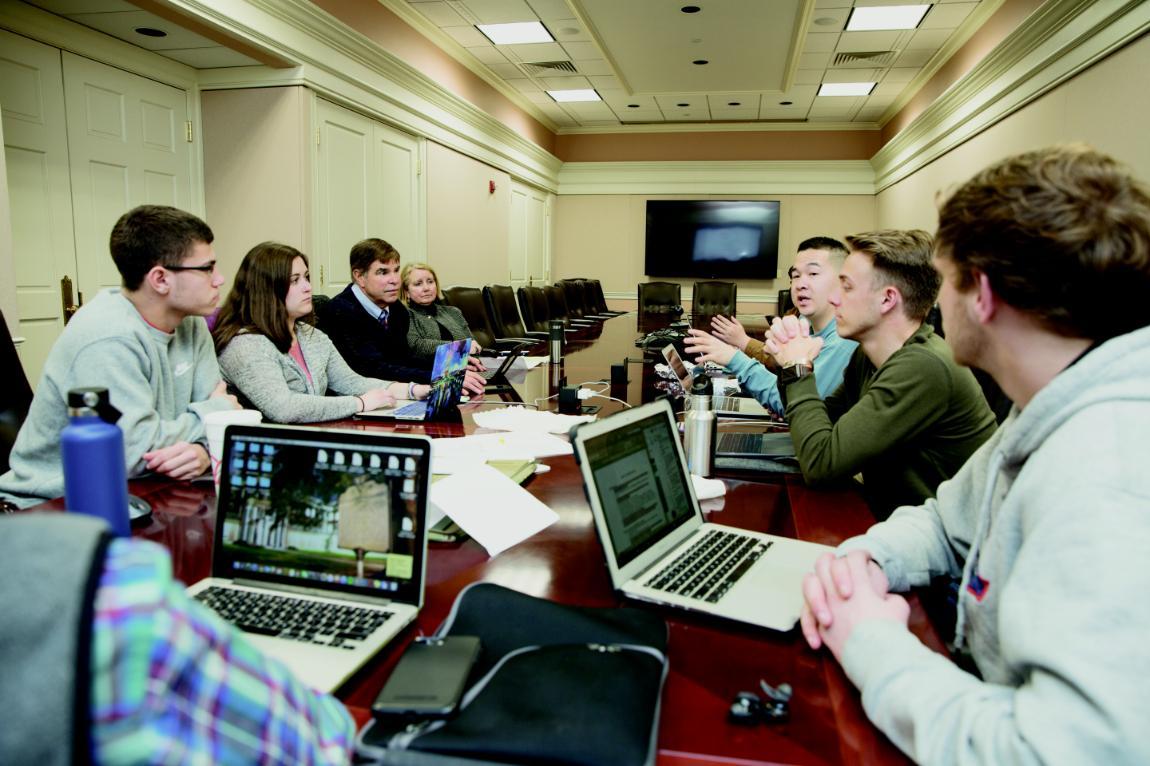

You’ve heard the stereotype: millennials—a population group that includes today’s college students—are “entitled.” In endless articles and commentaries, young people are dismissed as lazy, uninvolved and unwilling to work as hard as previous generations.
But Dr. Tim Pierson, Longwood’s beloved longtime vice president for student affairs, isn’t buying it. Or if there’s any truth to the characterization, then Longwood is an exception.
The familiar, jovial steward of the student experience at Longwood, Pierson has been interacting with generations of students since he first arrived as dean of students in 1992. He is one of the first people freshmen meet at orientation and one of the faces they see as they cross the stage at commencement. Nobody knows more Longwood students and alumni. From his vantage point, today’s students are exhibiting the well-known Longwood traits of commitment to community more than ever before.
The pervasive stereotype of this generation of college students is that they are entitled. Do you find that is true or a myth?
It’s a total myth. People often forget that these students have already been through a lot that has shaped their young lives: 9/11, Virginia Tech, Newtown, a wildly unpredictable economy.
One of the ways they have responded to that turmoil is by creating a culture that is much more accepting of one another than previous generations. They are extremely supportive of each other. When asked on the 2017 National Survey for Student Engagement to rate their relationships with other students on campus, 84 percent of our students reported those relationships were positive.
I call it growth-oriented. More and more of our students are seeking opportunities to achieve and be involved—there’s an intuitive sense in most of them that they have a responsibility not only to themselves but to something more, whether it’s their university or society at large.
Is there data that shows that involvement?
Research shows that the time and energy students invest in educationally purposeful activities is critically important to their success. Fifty percent of our students are involved in a student organization. That’s a very high percentage, and we rate near the top of peer institutions on measurements of student engagement. But that statistic doesn’t paint the full picture. The vast majority of those students are not involved in one organization, but three, four or even five. And I’m convinced the reason is not that we have more organizations than other universities—it’s the nature of our students.

What kinds of organizations are we talking about?
One I consider a signature organization is Beyond the Numbers. It’s a group of students who volunteer to tutor local kids after school. They are one of the most active groups on campus and have even landed funding from alumni who have heard about it and were so impressed by their involvement.
By far the biggest yearly event is Relay for Life, which has been going on for decades. But it’s only been recently that we’ve started to see the number of students involved top the 1,000 mark—an astounding 20 percent of the student body. Furthermore, we’ve raised as much as $70,000 in a single year. If you think about $70,000 in relation to a school of our size, that’s a sign of our involvement and spirit. And then there are more traditional ways to be involved like student government and resident assistants or campus recreation. There are more than 70 students who work with campus rec— many of them gaining valuable work experience as personal trainers that will help them when they apply for jobs.
If you’re an elementary school teacher— working with kids for eight hours a day, preparing lesson plans late into the night, working weekends—you know what it means to serve. That same spirit abounds on our campus today.
Tim Pierson, Vice President for Student Affairs Tweet This
You mentioned the nature of our students. What do you think is the connective thread that links previous generations with today’s Longwood student?
When I see alumni on campus, I’ll often say, "If you liked Longwood then, you’ll like it even more today.”
I think it goes back to our mission. Citizen leadership was a concept that was alive and well on this campus long, long before the term was ever coined. It’s woven into the fabric of this place. If you’re an elementary school teacher—working with kids for eight hours a day, preparing lesson plans late into the night, working weekends—you know what it means to serve. That same spirit abounds on our campus today. Our students might not know exactly what citizen leadership is when they first arrive on campus, but they learn it from their RAs or peer mentors or classmates very quickly. It’s the thing that’s passed down from generation to generation on campus.
What kind of student seeks out Longwood?
For as long as I’ve been here, the same kind of student has been attracted to Longwood: They are interested in seeking out greater possibilities for themselves. I had a conversation with the director of our institutional research office who looks at the characteristics of students who do well here, and he pointed to a couple of things, in particular: They are future-oriented, and they’re trying to find out what their potential is. I think that’s been true of our students for many, many years. And that profile holds true even as we have experienced a substantial increase in diversity in our student body.
One thing is noticeably different: The number of students on campus wearing Longwood hats, T-shirts and sweatshirts. What’s your take on that?
That’s been one of the most dramatic changes I’ve seen over the last 10 years. You know, students are really proud of this place—they know it’s special. They take pride in who we are, and promoting our identity comes naturally when that pride is there.
